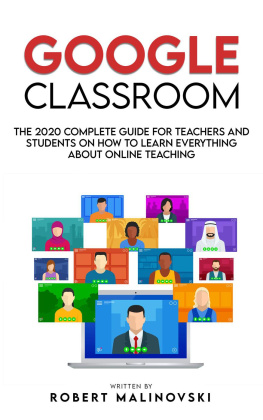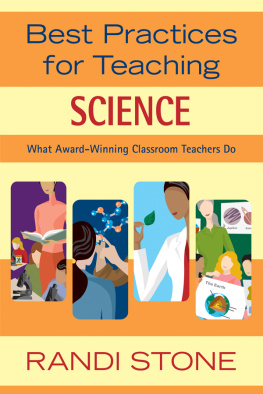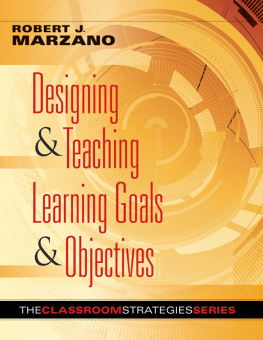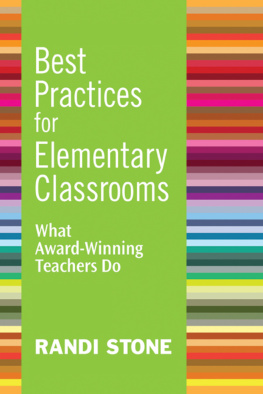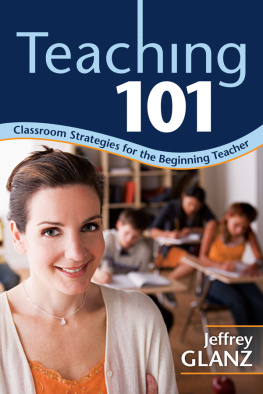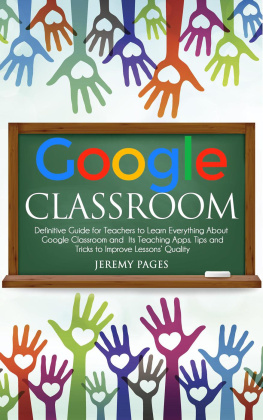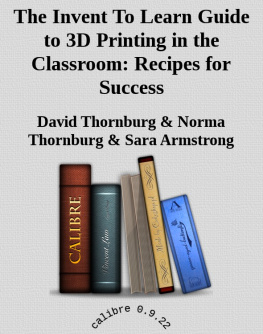
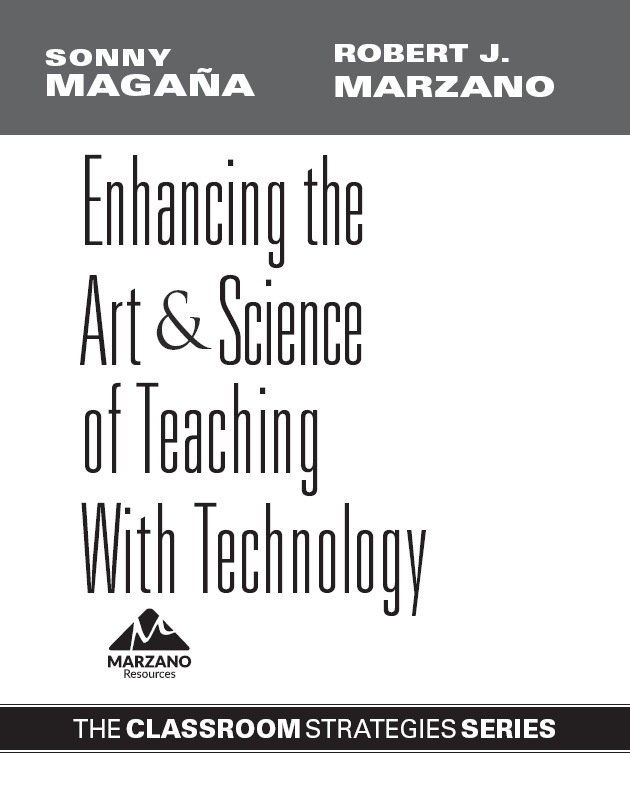
Copyright 2014 by Marzano Resources
Materials appearing here are copyrighted. With one exception, all rights are reserved. Readers may reproduce only those pages marked Reproducible. Otherwise, no part of this book may be reproduced or transmitted in any form or by any means (electronic, photocopying, recording, or otherwise) without prior written permission of the publisher and the author.
555 North Morton Street
Bloomington, IN 47404
888.849.0851
FAX: 866.801.1447
email:
MarzanoResources.com
Visit MarzanoResources.com/classroomstrategies to download the reproducibles in this book.
Printed in the United States of America
Library of Congress Control Number: 2013952335
ISBN: 978-0-9858902-4-7 (paperback)

Editorial Director: Lesley Bolton
Managing Production Editor: Caroline Weiss
Production Editor: Rachel Rosolina
Proofreader: Sarah Payne-Mills
Text and Cover Designer: Amy Shock
Compositor: Laura Kagemann
CONTENTS
Italicized entries indicate reproducible forms.
ABOUT THE AUTHORS

Anthony J. Sonny Magaa, EdM, has served in the field of education for thirty years as a classroom teacher, building principal, district administrator, state technology project director, author, speaker, and trainer. Sonny created and served as director of Washingtons first CyberSchool, a successful blended learning program that continues to meet the needs of at-risk students in Washington State. He received the Milken National Educator Award in 1997 and the Governors Commendation for Distinguished Achievement in Education in 1998. Sonny received a bachelor of science degree in biology from Stockton College in New Jersey and a masters degree in educational technology from City University of Seattle and is completing a doctorate at Seattle University.

Robert J. Marzano, PhD, is the cofounder and CAO of Marzano Resources in Denver, Colorado. During his forty years in the field of education, he has worked with educators as a speaker and trainer and has authored more than thirty books and 150 articles on topics such as instruction, assessment, writing and implementing standards, cognition, effective leadership, and school intervention. His books include The Art and Science of Teaching, Leaders of Learning, On Excellence in Teaching, Effective Supervision, The Classroom Strategies Series, Using Common Core Standards to Enhance Classroom Instruction and Assessment, Vocabulary for the Common Core, and Teacher Evaluation That Makes a Difference. His practical translations of the most current research and theory into classroom strategies are known internationally and are widely practiced by both teachers and administrators. He received a bachelors degree from Iona College in New York, a masters degree from Seattle University, and a doctorate from the University of Washington.
INTRODUCTION
Enhancing the Art & Science of Teaching With Technology is part of a series of books collectively referred to as The Classroom Strategies Series. This series aims to provide teachers, as well as building and district administrators, with an in-depth treatment of research-based instructional strategies that can be used in the classroom to enhance student achievement. Many of the strategies addressed in this series have been covered in other works, such as Classroom Instruction That Works (Marzano, Pickering, & Pollock, 2001), Classroom Management That Works (Marzano, 2003), The Art and Science of Teaching (Marzano, 2007), and Effective Supervision (Marzano, Frontier, & Livingston, 2011). Although those works devoted a chapter or a part of a chapter to particular strategies, The Classroom Strategies Series devotes an entire book to an instructional strategy or set of related strategies.
Enhancing the Art & Science of Teaching With Technology represents a shift in thinking about educational technology. Educators who only know how to operate new technologies are insufficiently prepared to use these powerful tools to improve classroom instruction. Teachers must also understand and apply effective pedagogical principles in order to wield technology tools with maximum impact. We believe that educational technology is best used in conjunction with research-based instructional strategies that already have a high probability of enhancing learning outcomes. This book offers practical guidance for supplementing effective instruction with technology.
We begin with a brief but inclusive chapter that reviews the research and theory on educational technology. Although you may be eager to move right into those chapters that provide recommendations for practice in schools, we strongly encourage you to examine the research and theory, as they are the foundation for the entire book. Indeed, a basic purpose of Enhancing the Art & Science of Teaching With Technology and others in The Classroom Strategies Series is to present the most useful strategies based on the strongest research and theory available.
Because research and theory can provide only a general direction for classroom practice, Enhancing the Art & Science of Teaching With Technology goes one step further to translate that research into applications for educational technology use in schools. Specifically, this book addresses how technology can help teachers enhance their current effective instructional practices.
How to Use This Book
After a chapter on the research and theory behind technology use in classrooms, we explore The Art and Science of Teaching framework. Each chapter begins with a design question that asks the reader to consider how technology can be applied to enhance the elements of the framework. Next, we describe instructional strategies for each element under that design question. Then, we detail practical ways teachers can enhance each strategy using educational technology tools. Finally, each chapter concludes with a classroom-based vignette that shows how teachers can integrate these tools into their classroom practice. To conclude the book, weve provided a glossary of helpful terms regarding technology in the classroom.
Educators can use Enhancing the Art & Science of Teaching With Technology as a self-study text that provides an in-depth understanding of educational technology. As you progress through the chapters, you will encounter comprehension questions. It is important to complete these questions and compare your answers with those in ). Such interaction provides a review of the content and allows a thorough examination of your understanding. Groups or teams of teachers and administrators who wish to examine the topic of educational technology in depth may also use Enhancing the Art & Science of Teaching With Technology. When this is the case, teams should answer the questions independently and then compare their answers in small- or large-group settings.
Next page



